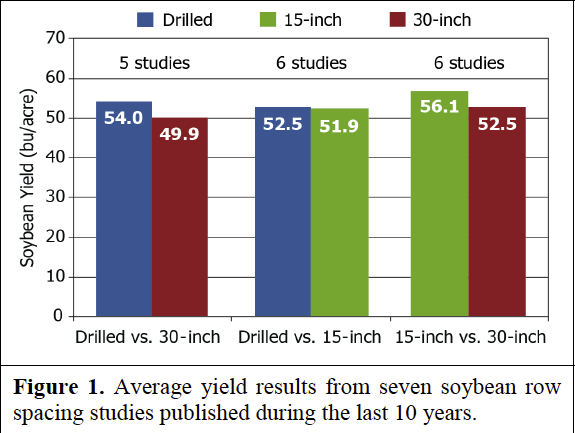| To read the entire article, click here. |
Row width is one of the management practices most often considered by growers as potentially important to increase soybean yields and profits.
For that reason, numerous research studies have been conducted over the last 40 years to determine optimal soybean row spacing.
This Crop Insights article reviews research results, current row-spacing trends and factors beyond yield potential that may influence row spacing preferences of soybean growers.
Below is a summary. To read the entire article click here (PDF).
|
|
• Recent research studies have shown a 3 to 4 bushel per acre yield advantage with drilled narrow-row and 15-inch row soybeans over soybeans in 30-inch rows.
• Soybean row spacing preferences vary greatly across the Midwestern U.S., with narrow rows (15 inches or less) favored in Illinois and Indiana, and 30-inch rows more common in Iowa and Minnesota.
• The relatively limited adoption of narrow-row soybeans in some areas indicates that factors other than yield potential are influencing grower decisions.
• Soybean acreage in drilled narrow rows has declined across North America in the last five years, while acreage in 15-inch rows has increased. Thirty-inch rows have increased in some areas, in part to mitigate Sclerotinia stem rot, or white mold.
• Factors such as equipment costs, workload management, planting and harvest efficiency, and weed and disease control can all influence the economic viability of narrow-row soybeans.







Post a comment
Report Abusive Comment